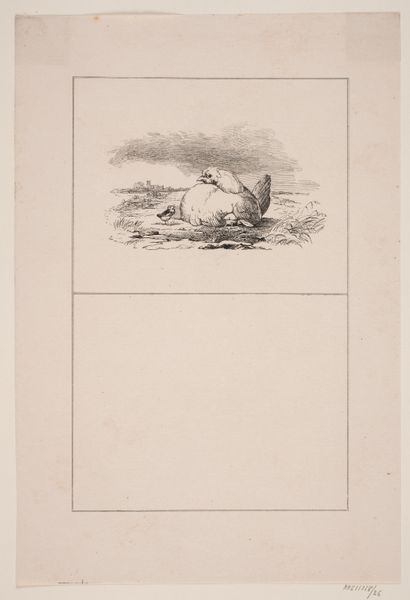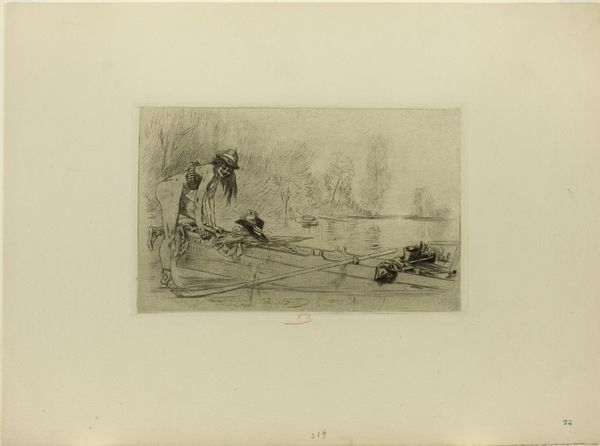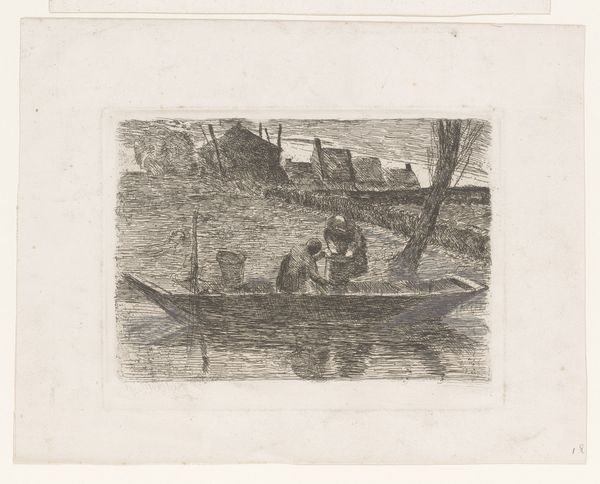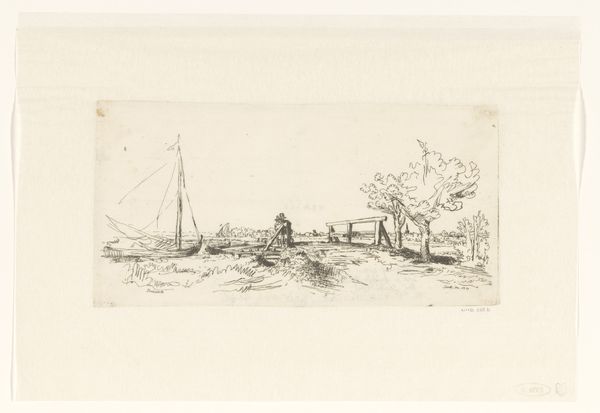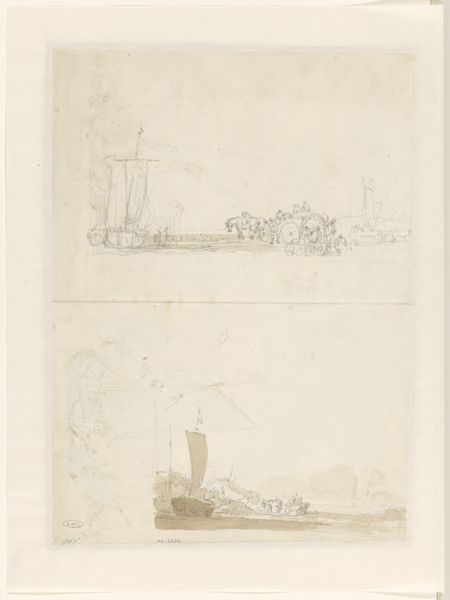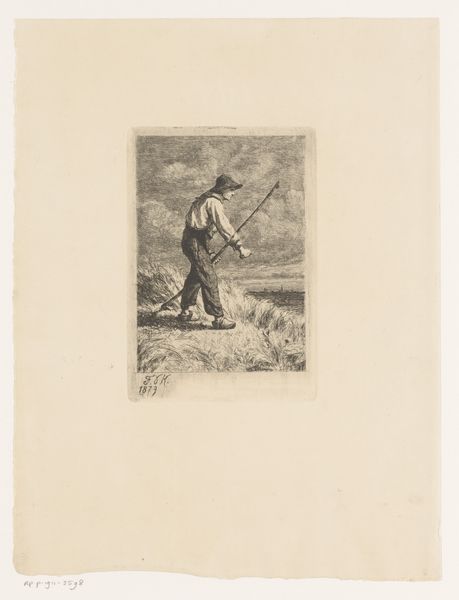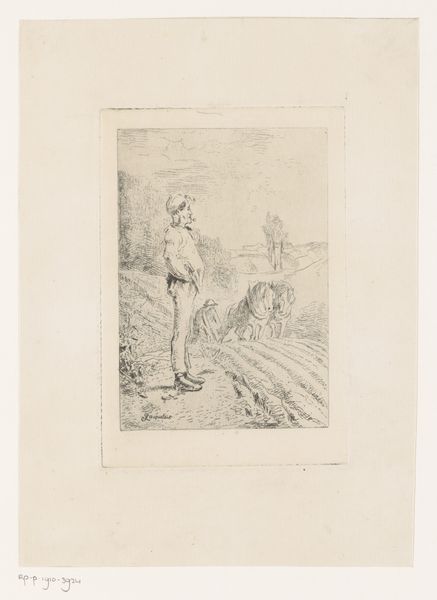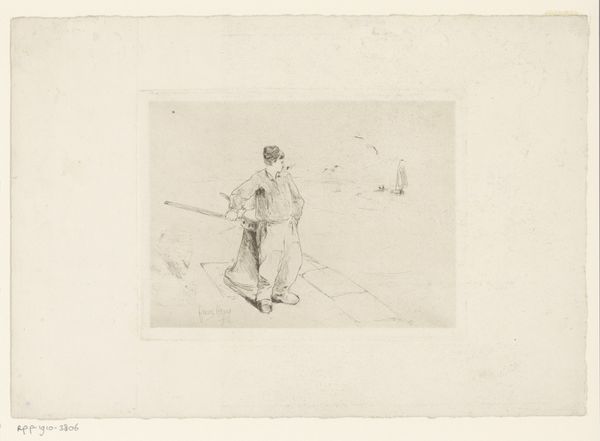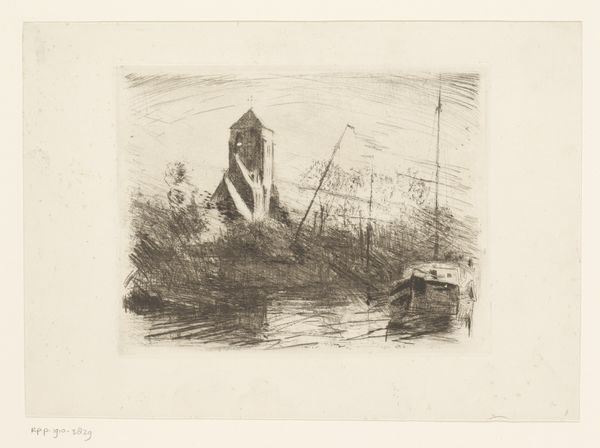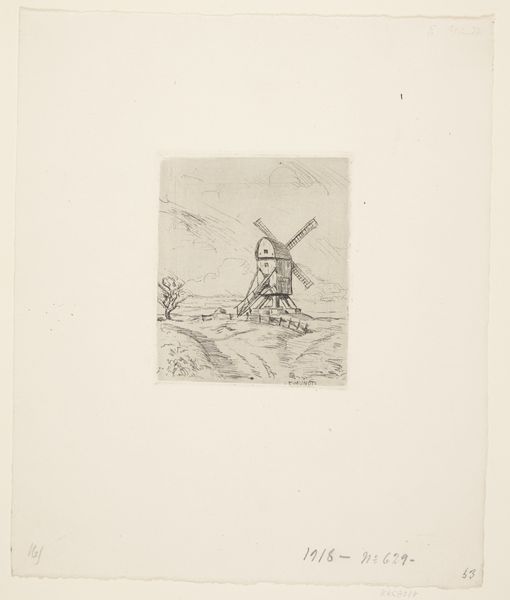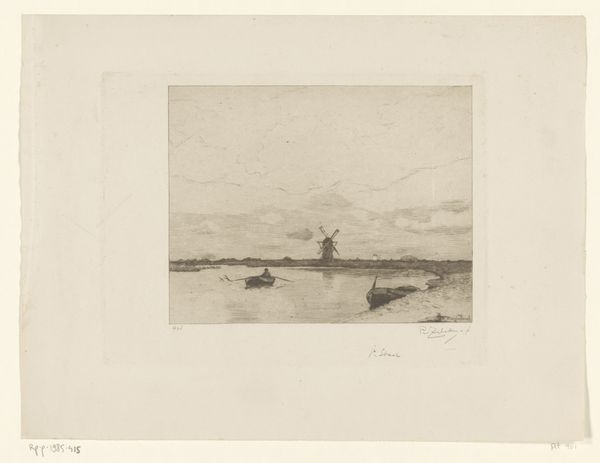
drawing, print, etching, paper, ink
#
drawing
#
dutch-golden-age
# print
#
etching
#
landscape
#
figuration
#
paper
#
ink
#
genre-painting
#
realism
Dimensions: height 84 mm, width 118 mm, height 120 mm, width 158 mm
Copyright: Rijks Museum: Open Domain
Editor: Here we have Frans Hens' "Scheepswrak in het water en een pijprokende man op de kade," an 1889 etching. The subdued ink tones lend the composition a somber mood; how do you read the relationship between the figures and their placement in this print? Curator: Indeed, the tonality establishes the atmosphere. Let's analyze how the composition guides the viewer's eye. We have two distinct scenes—the shipwreck above and the figure below. The figure, smoking a pipe, stands on what appears to be a dock or pier. The artist segments the composition to set in contrast the shipwreck and the man, forcing a relationship between them. Note how the horizon line of the upper scene corresponds with the implied horizon line in the lower one. The perspective is somewhat flattened, characteristic of realist etchings of this era, foregrounding a thematic inquiry. What structural similarities or disruptions do you observe? Editor: Well, both scenes involve water, but one embodies ruin, and the other solitary observation. The lower image also contains firmer geometric elements with the hard line of the stone pavement and implied linear aspects to the figure itself. So, would you say Hens utilizes the geometrical lines of the dock as a direct foil to the dilapidated ship as a study of form and decay? Curator: Precisely. Observe how the lines within each frame contribute to its overall effect. The diagonal of the boat suggests dynamic collapse against the orthogonal dock. It would seem Hens is consciously contrasting implied textures. Now, what purpose do you perceive the artist in establishing a correlation of themes by fragmenting its structural presentation? Editor: It is a way for Hens to isolate and present two seemingly distinct objects—wreckage, observer—for comparative and contrasting compositional study! Curator: Correct, providing a more detailed focus on structure. Editor: Thank you! Looking at it this way makes me see the etching's depth!
Comments
No comments
Be the first to comment and join the conversation on the ultimate creative platform.
